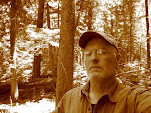It's the middle of the tide change, when the currents are usually moving the swiftest, in most topography. I push out from shore and the bow swings upstream with the tidal flow of the Lieutenant River. I take the paddle and turn it downstream.
It's a fine weekend day and I come across a pod of kayakers every so often. They move somewhat aimlessly and somewhat haltingly...people enjoying the outdoors...a pastime more than a lifestyle.
Wrensong dominates the river, the buzzer robot sounds emanating from the cattails and phragmites. Their nests are built and in use, but finding a wren nest takes patience and sharp eyes, well camouflaged and built of the same stuff they are hidden in.
As I move toward the sea, the salt marsh takes over, the cattails and phragmites give way to spartina, the wrens yield to egrets, great blue herons, willets, terns and more and more osprey.
I hoped that the young osprey might be testing their wings, but they are still up in the nests, watching until the adult gives the right call and then ducking down, not hidden if one looks close, but less obvious.
A half mile short of the sea I turn up the Black Hall River. Once I leave the confluence it is new ground to me. Salt marsh with forested edges until the first bridge, a 50 year old design...more earthwork than bridge, a constriction. The river narrows and the forest becomes more dominant. The next bridge is the railroad. There's no big change here, except that the river begins to meander through cattail marsh bounded by the forest. The third bridge is older, lower and narrower. It backs up the tide so that I get a strong push when I pass under. The river narrows significantly and meanders even tighter. I doubt that many people come up this far and I don't see anyone.
Bodies of water
20 hours ago






No comments:
Post a Comment